Mark Gies - How The Inflation Reduction Act is Affecting Solar - PODCAST TRANSCRIPTION
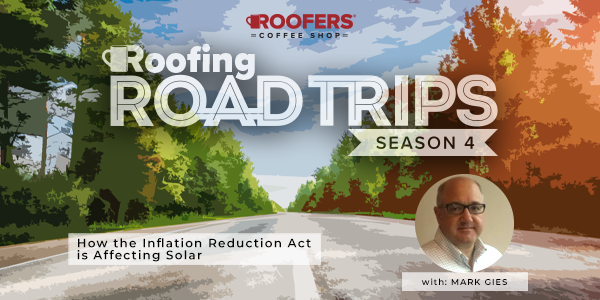
Editor's note: The following is the transcript of a live interview with Mark Gies of S-5! You can read the interview below or listen to the podcast.
Heidi Ellsworth:
Welcome to Roofing Road Trips with Heidi. Explore the roofing industry through the eyes of a long-term professional within the trade. Listen for insights, interviews and exciting news in the roofing industry today.
Hello and welcome to another Roofing Road Trips from Roofer's Coffee Shop. This is Heidi Ellsworth and I am here today with Mark Gies of S-5!. We are going to talk about something near and dear to my heart and that is the solar industry. I love hearing what's going on in solar and especially when it's combined with metal roofing. So as part of this, I want to invite and say welcome to Mark. Welcome to Roofing Road Trips.
Mark Gies:
Thank you Heidi. I'm happy to be here. And also like you, I love solar.
Heidi Ellsworth:
I know, I know. For years, I've been just like going, come on, let's go, let's go. This is the best thing ever on the rooftop.
Mark Gies:
And it's getting better and better as far as the growth. So we'll talk about that, I guess in a few-
Heidi Ellsworth:
So much is happening out there. I'm so glad to have you and to be able to share your wisdom and your expert knowledge on what all is happening. But before we get there, why don't we start out, please introduce yourself, tell us a little bit about you and S-5!.
Mark Gies:
Thanks. Thank you Heidi. So I'm Mark Gies. I'm Director of Product Management at S-5!. I've been there here for three years. It's been a great place to be and a lot of my work has been on the solar side of the business here at S-5!. And personally I've been in solar for more than 13 years and all of that has been with mounting systems. So it's been on the structural side, what it takes to hold down solar onto roofs. And actually most of the work I've done has been with roof top solar.
Heidi Ellsworth:
Oh wow, okay. That's awesome.
Mark Gies:
And so all my experience has been with what takes to hold it down and as well, a big part of getting a project up and running is getting it permitted and dealing with the codes and standards. And I've just learned a lot about that along the way. And then as far as S-5! goes, we are a 30 year old company. Rob Haddock invented 30 years ago what's known as the standing seam non-penetrating clamp. And he built a business around it. And so we are really the big brand in that space of holding down anything to a metal roof. And besides product, we also spend a lot of effort educating, innovating and trying to do the right thing for the industry.
Heidi Ellsworth:
Right. Well I had a great interview with Rob at Metal Con and he was telling all the history on that. And it makes sense to me at this point where we're at with solar that you need what S-5! can do to stabilize and mount and make sure everything is right on the roof for solar because metal roofing is the perfect solution underneath solar, and you're hearing it across the board.
Mark Gies:
Yeah, one of our big messages, my big message, is that metal roof is the best place to put solar. And the big reason is that a metal roof will last 70 years or more. And a solar asset, like a bunch of solar modules, they last 30 or 40 years. So why would you put that on a roof that may need to be replaced in 20 years? And so it just makes sense to put it on a platform on a roof where you know the roof is going to outlast the solar system.
Heidi Ellsworth:
I would love to talk about what you've seen in the last 13 years and some of your insights on the growth of solar and how the roofing community is or is not really taking advantage of being a part of this boom that's happening.
Mark Gies:
So the 13 years has been a long road and there's definitely been ups and downs, but it's been pretty much all the time I've been in solar, it's been talking about just growing it. And it has been grown sometimes less than others. A lot of it has been related to where the federal and state level and local incentives are. So certain states have grown more than others and others now are catching up. And so that's been the landscape for the last 13 years. The recent thing that has gotten everybody excited and really has jacked up everybody's forecasts outlook for solar itself, including rooftop solar is this Inflation Reduction Act that was recently passed. And what that is that's solidifying the federal tax credits that were the fence the last few years, it's solidifying those for the next 10 years at least.
Plus the 30% that everybody has known, the 30% you get back on your installation costs in the form of tax credits, now you can add onto it to get more than the 30% by buying domestic content, for instance, by developing projects in certain targeted zones. So there's a lot of tax incentives that are out there now that's new, people can take advantage of. And that's really created a firestorm storm of forecast. Now for instance, CIA whose one of the big industry organizations, they now saying that the amount of solar on the ground will triple in the next five years and installation capacity yearly will also triple. And since that Inflation Reduction Act passed, they've increased their forecast by at least 40% across the board. So now the word is it's going to be grown faster than ever and everybody's very bullish on it.
And then on a global level as well, and I think a lot of that is related to the cost of energy globally is going up and with the conflict that's out there, countries I know in Europe especially, they're really talking about how can we reduce our dependence on oil finally and let's put some effort into it. So there's potentially mandates out there to put solar on roofs. So the forecast for globally is also very bullish to triple in size the next five, six, seven years or whatever it is. So that's setting the stage for just a lot of companies starting and a lot of opportunities out there.
So part of the Inflation Reduction Act is about on the project level, you can get more money back. So it's going to grow that. But there's also incentives on the manufacturing level. They're ironing it out, but there's some manufacturing tax credits that are in incentives to bring back panel manufacturing into the US, bring back inverter manufacturing into the US and also with some ground mount solar trackers is one big category, not really rooftop, but it's a category where they're trying to bring back some of the structure manufacturing into the US. So that's happening. So part of that Inflation Reduction Act was actually to bring manufacturing back into the US of these major components.
Heidi Ellsworth:
Well, with the type of growth that you're talking about, I mean when they are tripling their estimates or 40% growth, that means there's going to be a huge demand for more manufacturing and to get those systems out. How do you see that supply chain and material? I mean, we've been fighting material shortage so long, is that going to have some effect here on how much they can actually get out and installed?
Mark Gies:
I think within a few years, yes, definitely the hiccup will be over. I think now that these companies are now building plants as we speak, manufacturing plants are being built in the US as part of this program, as part of the Inflation Reduction Act. So once they're up and running, I think that within a few years, maybe even less, the hiccups that we saw post Covid of all the supply chain issues that were happening, are slowly starting to get through that. But the demand is going to just continue to grow and grow and grow. So it's going to always be a challenge, I think, to keep the supply in line with the demand.
Heidi Ellsworth:
How do you see roofing contractors really taking advantage of this and getting involved in solar? What do they need to do to be part of this?
Mark Gies:
Well, I would take two levels. One is I think the roofing industry overall, there's an opportunity to really help the technology advance because I think there's going to continue to be innovation out there to reduce the cost of the products and the installation part of it. And I think there's also a demand for how do we integrate the roof with the solar. So I think the roofing industry has this opportunity to be part of that innovation and to be part of that evolution of integrating solar more into the initial construction of the house and especially the roof itself. So I think that that's that opportunity.
And then I think on the contractor level, and if you look at the history of solar installers, early on there were just mom and pop and companies that we're going to be in solar installer and we're diving into it. But then roofing companies as well as electrical companies decided, well, this is close enough, why should we do all this work? Why don't we do everything and a roofer to go up on a roof, put a roof up, come back down. And then as he's leaving, these new guys are showing up, putting ladders in the same place and they're now getting on the roof to install solar. Like that's piece of the pie that roofers could easily transition into. And that has always happened, but I think now it's going to be more than ever where there's going to be demand and opportunity for these roofing contractors to expand their business to also install the solar part of it.
And that's just more top line revenue for them by doing that. And it's more efficient actually. So I think there's going to be a lot of evolution in the area of the roof becoming tighter with the solar and now the roofing contractors, there's going to be a demand for them to do more of that business and make them fill that gap, I think. And so that's a tremendous opportunity I think for roofing contractors to look at. And at S-5! our message is the roof really is part of the system. The roof and solar is a single asset and it should be looked at that from all aspects, from the products, the installation of it together. And also from our perspective, you should use a metal roof because the metal roof is really the best place to put solar.
Heidi Ellsworth:
And you're working with contractors every day to help. I know you do tons of webinars, education, you were speaking at Metal Con, you're working with contractors to help them start embracing this, right?
Mark Gies:
Yeah, especially at Metal Con the past two years when I've spoken, I've talked to roofing contractors who say what's the best way for me to get into solar? So I've given them just some insight as to what NABCEP is an organization that you can get certified to install solar. So if these roofing contractors get a few of their folks in that path to be NABCEP certified, that really makes them more easier to win these contracts if you have these people. So I have definitely talked to people, this is the past two years at Metal Con, that are roofing contractors who are interested in solar, getting into solar. And I think it's a natural fit and I don't see why it's not happening quicker, to be honest.
Heidi Ellsworth:
I think part of it too is we are challenged with this labor shortage. And so roofing contractors are struggling just to keep their roofing part going and now to add solar in there. But to me it seems like there is almost, when we talk about this next generation, for them to be working on metal roofing, to be working on solar, that's pretty cool. It has a little bit of a cool factor. And so as part of this, what are you seeing with skilled labor around metal roofing and the contractors getting... I'd love you to speak a little bit more too about NABCEP. How they're getting their crews and people trained so that they can take this on.
Mark Gies:
I mean, I think roofing contractors, especially in this tight labor market, need to offer that to their people and if you get into solar, I think you're right, it's adding the cool factor. There's more to it. And as I said, so there are programs out there, training programs with a few organizations. I know NABCEP, there are a few as well as NRCA. They're also trying to make sure that everything's done right. So the training is important. So you're a new employee, young person, and not only you're interested on the roof side, but then now there's solar and one part of solar, that's the hurdle for mechanical is the electric side. So now the roofing contractors, if they really want to become a one stop shop, you need to have in house licensed electrical people to do that part of it as well.
So that's an opportunity to train people, to give people a goal in their career, to advance it and to learn different things besides just putting the roof up itself. So I think that's good. And I think everybody's just got to pay competitively and I think offer that training and then have that bigger vision of are we doing that? Are we going to partner with somebody? Are we going to have that plan to be able to tell somebody who's a potential employee to get them excited about it, I guess.
Heidi Ellsworth:
Yeah. To get really excited. Well, and you started at the very beginning talking about your experience the last 13 years with working with the incentives and working with the regulations and the permitting and all of that that goes on too. So there's training that's going to have to come into the front office in order for contractors to get involved in solar too, right?
Mark Gies:
Sure. Yeah. I think I would say that solar is similar to construction when you're installing it in that when you put a roof up, you have to get a permit, a building permit. So the basic steps are still there and it's still really to me closely tied to construction. But it's a bigger variety of knowledge. So like I said, you have to be knowledgeable on the electric side. So electric code, there's different structural issues I guess that happen with when you put solar on a roof, with wind, with snow forces. So you really have to be able to do that engineering or have access to that to be able to get everything, get all your I's dotted and your T's crossed. So you can go through permitting. One thing that we do as a company that I'm pretty proud of is that we have always been involved on an industry level with committees and just the evolution of these industries we're in, which is roofing and solar.
And on the solar side, myself and Dustin Haddock are involved in what's called the solar app, which is a way to accelerate permitting. So you get instant permitting because some solar projects can get caught up with building inspectors in the permitting departments for months because people are trying to sort out what does solar do? How do we make sure it's not going to fly off the roof. How to prove that. It's still a new enough space that there's still a lot of building officials who are new to it. And especially in some states where it's still pretty new. So there's an effort in place happening to try to simplify, to standardize it nationwide. And we're involved in that as a company.
Heidi Ellsworth:
Oh, that's great.
Mark Gies:
But that is going to be benefit the whole industry and make it grow faster. And that's what's important to us. We want to do things that help the industry move faster.
Heidi Ellsworth:
And do more. So let's talk a little bit about the importance of that attachment. Maybe a little bit of history on, I know that when I talked to Rob, the first attachments were on snow because he didn't want snow to come off the building anymore. But talk a little bit about the technology and the engineering behind your clamps and attachments for solar.
Mark Gies:
So there's really two parts to it. One is that the same attachments that we build and sell for anything are those attachments. And our focus on the attachments, as probably Rob has said this, is that we don't really focus on creating a universal clamp that fits a lot of things. There's so many roof profiles out there, tons of them. And our focus is on trying to be pretty specific to design a clamp for each profile. And we're still working on that. That's still an ongoing thing. And the reason we do that is that we think, and if you look across our pictures of our different ones, you can see the roofs are different. So we design something that performs the best for that roof, is probably the least expensive and the easiest to install. So at that level of the roof interface where we really got our start and we're the experts on, we innovate with trying to create products that work the best, performance wise.
And then we test that. We test everything we have on all the roof profiles they fit. And we pride ourself in having all that data that's available so that people can engineer systems, you can get through permitting. So that's really the big part of us. And then specifically on the solar side. So on solar we will definitely support, if you want to put rails on, that's good. But we want you to use our clamps to touch the roof. That's very important. We also have a railless mounting system that we sell called the PVKIT. And that attaches to our clamps or our brackets and it goes directly to the roof. And our message with that is that metal roofs actually have rails. When you see the seams, when you see the corrugated ribs, trapezoidal ribs, those act as rails. So why would you want to put rails on top of rails.
They won't need the rails. You can save 85% of the mounting system weight, 85% aluminum in today's prices. You're not transporting rails. I have a picture in a presentation where I have 250 kilowatts of rails on a truck bed, on a tractor trailer truck bed. And then I have another picture with 250 kilowatts of our PVKIT in five boxes in the back of a pickup. You can just put those in a bucket and-
Heidi Ellsworth:
I love it.
Mark Gies:
So that's a big thing. It's really less expensive and you have less time on the roof because specifically with our product, our railless product, you don't have to measure because you use the solar panel as your jig to install. Whereas with a rail based system, you're measuring every rail basically.
Heidi Ellsworth:
It seems like that would be huge labor savings too.
Mark Gies:
So you're less time on the roof, less time on the roof, less material, less weight and less cost basically. So that's on the solar side. But as I said, our clamps and brackets, the same ones that are used for snow retention are used on the solar side. So that's really where our brand is the strongest is on that attachment itself. And we have gigawatts of solar on roofs, whether that be with rails and our product underneath it, or whether that be with our own PVB kit, our own direct attached system. So all in all over the years, we have about five gigawatts on roofs, and that includes Apple's new headquarters. There's 7.4 megawatts on that huge donut roof. And that's our PVKIT. So there's a hundred thousand points of attachment. Nothing is penetrating the roof on that roof.
Heidi Ellsworth:
That's so impressive. And I understand you just had some new products come out at Metal Con and some of them can help with some of the wire management or organization on the roof.
Mark Gies:
Yeah, probably our two newest products. One of them is a Shields, basically our PV conceal, which is a skirt that goes on the front. So if you have a residential project and you're looking straight up, it's steep slope and you obviously see solar on it, you can see underneath what's going on. So it's common to put a metal skirt that matches the roof across. So we just launched our version of that, and that attaches easily to our PVKIT. But then probably what you're referring to is we launch some products called CanDuit, which are conduit carriers, conduit clamps basically. And the beauty of them is that there's a lot out there, but these have specifically an M8 thread on them. So all our clamps, our brackets, everything else has an M8 thread in it.
So if you're on a small job, instead of having to buy a piece of unistrut and mount that and then you mount some conduit clamps, you can do one or two. If say you just have one or two conduits, you just use our CanDuit, put it on a block, put it on our clamp, and just install that easily. As well for bigger projects, we have our own version of a unru and it's on steroids. It's called the Gripper Fix, which is we sell into our utility market for satellite dishes and air conditioning systems. But it's basically a slotted rail on top that you can mount on the roof and you can just mount things like condo carriers, condo clamps on those. One thing that we're definitely doing, and I think this is for the future of solar, we really try to solve problems to help move forward. So we're continuously adding to our portfolio for the balance of systems to just make things easier, specifically for metal groups.
Heidi Ellsworth:
And I tell you, what I hear, you're right, you're solving problems. So for contractors out there who are listening right now, not only do you have some great advice on where to get some training to get this all started up, but you also need to spend some time with S-5! on how it's attached, how you're going to make this happen. And all the training that is on their website is amazing. All the webinars, the training, everything that goes on, if you're doing solar now, it will make it easier. If you have not been doing solar and you want to get into it, it's going to be something that's going to help you with your crews to make it a much easier transition to bringing in.
Mark Gies:
I mean, I've been here three years, one of the reasons I came on board is that I am very passionate myself about customer service, about having our customers back. And S-5! does that as well. So I'm very proud that we put a lot of effort in personally training. If people have problems with permitting, even if you buy through distribution, that's fine. We will personally support your project and as you mentioned, Heidi, if you're a roofing contractor, are you interested in doing so, we can definitely help you along the way for sure. I mean obviously there's a lot more to it than just the attachment part, but we can definitely provide insight and train you and help work however best we can do. And we are happy to do that. We love doing that.
Heidi Ellsworth:
I love it. I love it.
Mark Gies:
That's part of our DNA.
Heidi Ellsworth:
Yeah, I know. Working with all of you over there, just I see it every single day. We love it. Thank you, Mark. Thank you. Great advice, great information. I'm really excited to see a lot more roofing contractors and metal roofing contractors getting to solar because it's just such a great opportunity.
Mark Gies:
And I think as I said, there could be a lot more. I think there's an opportunity in the future for a lot more roofing contractors to get into the solar part of it. And there's more to it, but I think it's a natural transition, to be honest.
Heidi Ellsworth:
And a great recruitment for that next generation.
Mark Gies:
Right, exactly.
Heidi Ellsworth:
Everybody's looking for those little ways of getting them more involved.
Mark Gies:
And then another message that I send to the metal roofing industry is that they really should promote more than they do promote metal roofing as that best platform for solar to grow metal roof sales. I think metal roof sales are growing within the space, but I think that that message of if you ever want to do solar ever, you should put a metal roof on now. And I think that that is something that the metal roofing industry is a good message for them to use to sell more metal roofs basically.
Heidi Ellsworth:
Well, I know the Metal Construction Association and the Metal Roofing Alliance, they're all talking about it. It's a hot topic, I'm sure we'll be talking about in during the winter meetings too. Thank you again for being on Roofing Road Trips today. This is just great information. I appreciate you so much. Thank you. And I want to thank all of you out there for listening. You can find all this information that we've been talking about on Roofers Coffee Shop and Metal Coffee Shop under the S-5! directory. So check it out. I'm going to make sure we're getting some of the NABCEP. We'll have some of those training things on the site too, so you can find that easily. And of course you can find all of it at the S-5! on website and company profile. Please listen to all of our podcasts under the read, listen, watch on Roofing Road Trips or on your favorite podcast channel. Be sure to subscribe and hit that notification so you don't miss a single episode. And we'll be seeing you next time on Roofing Road Trips.
Make sure to subscribe to our channel and leave a review. Thanks for listening. This has been Roofing Road Trips with Heidi from the rooferscoffeeshop.com.



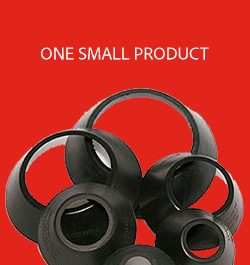










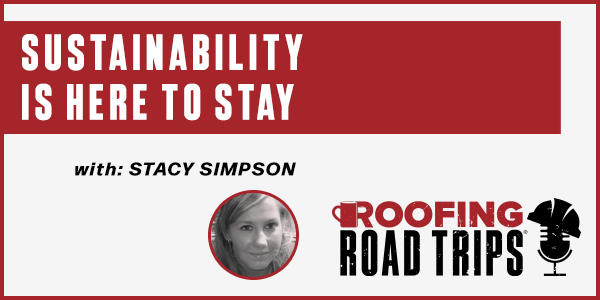
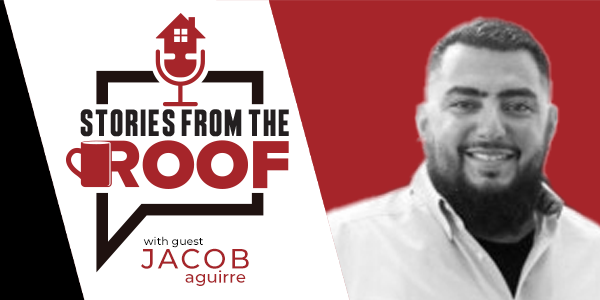





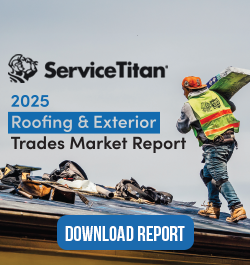
Comments
Leave a Reply
Have an account? Login to leave a comment!
Sign In